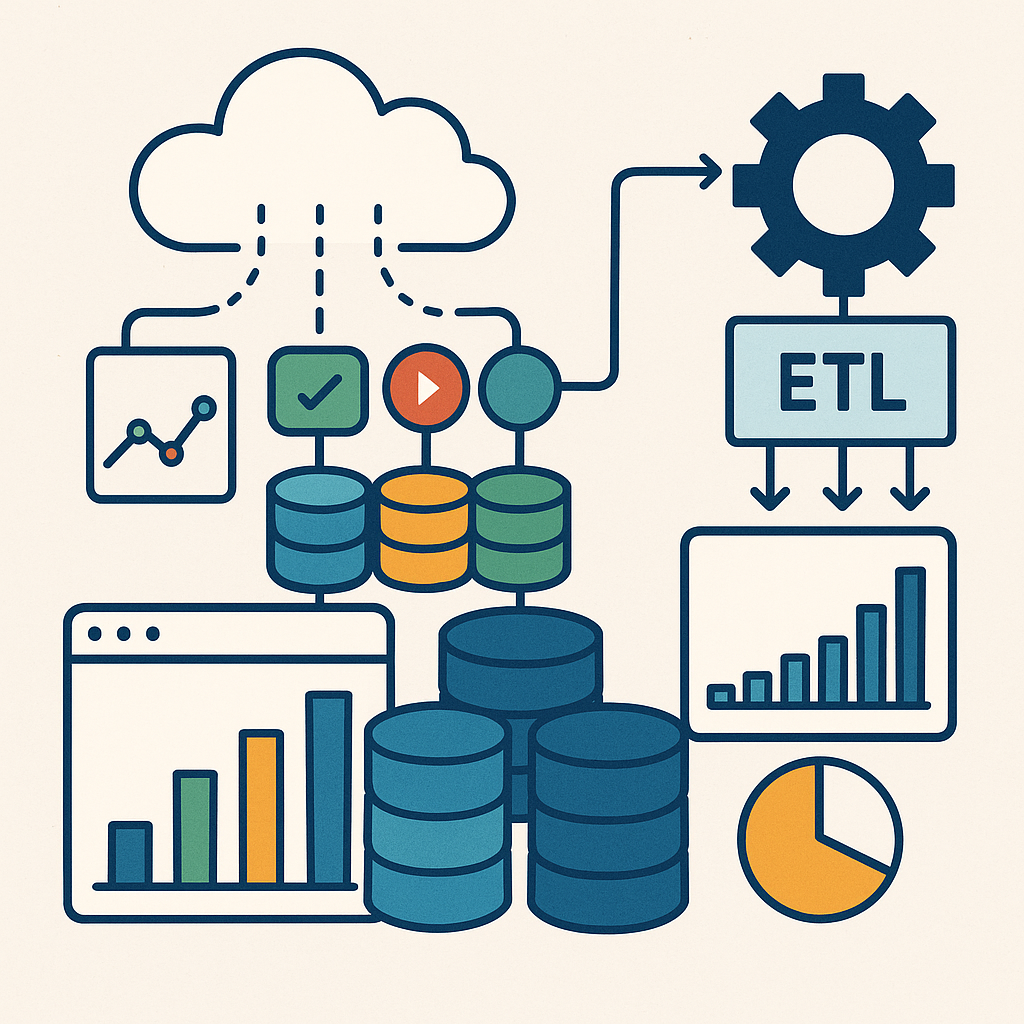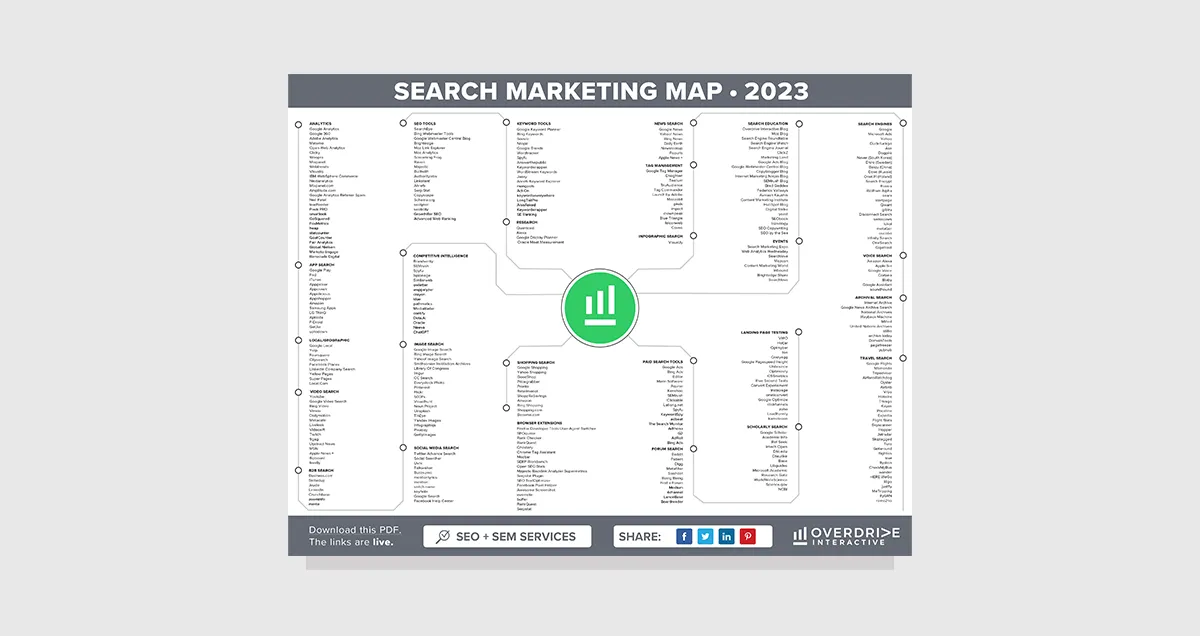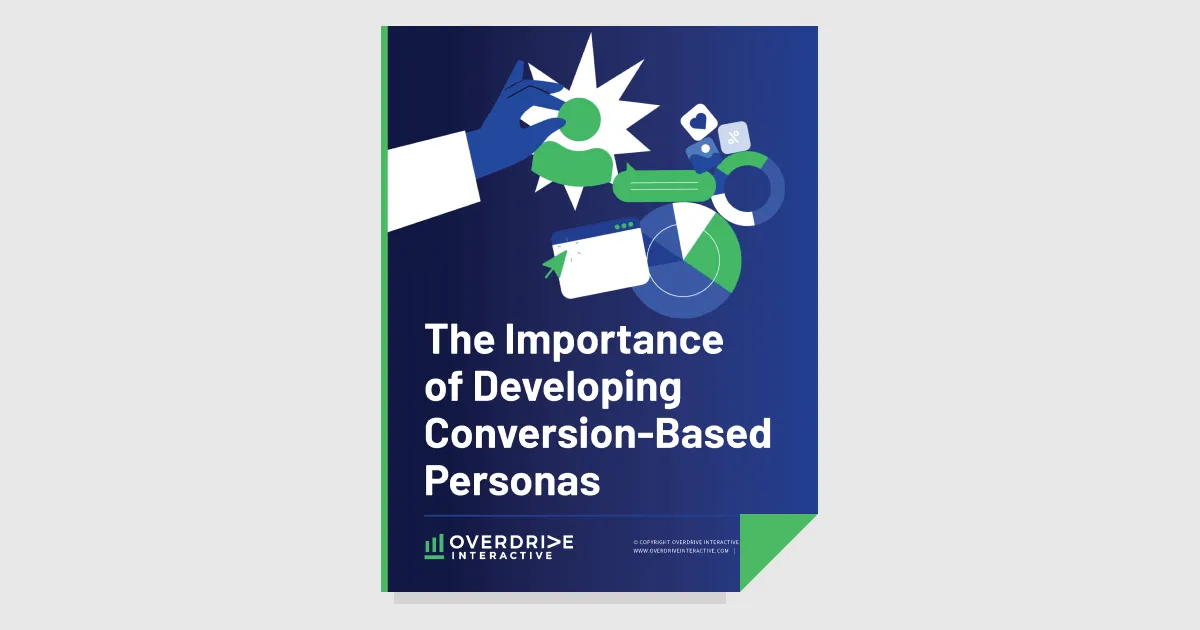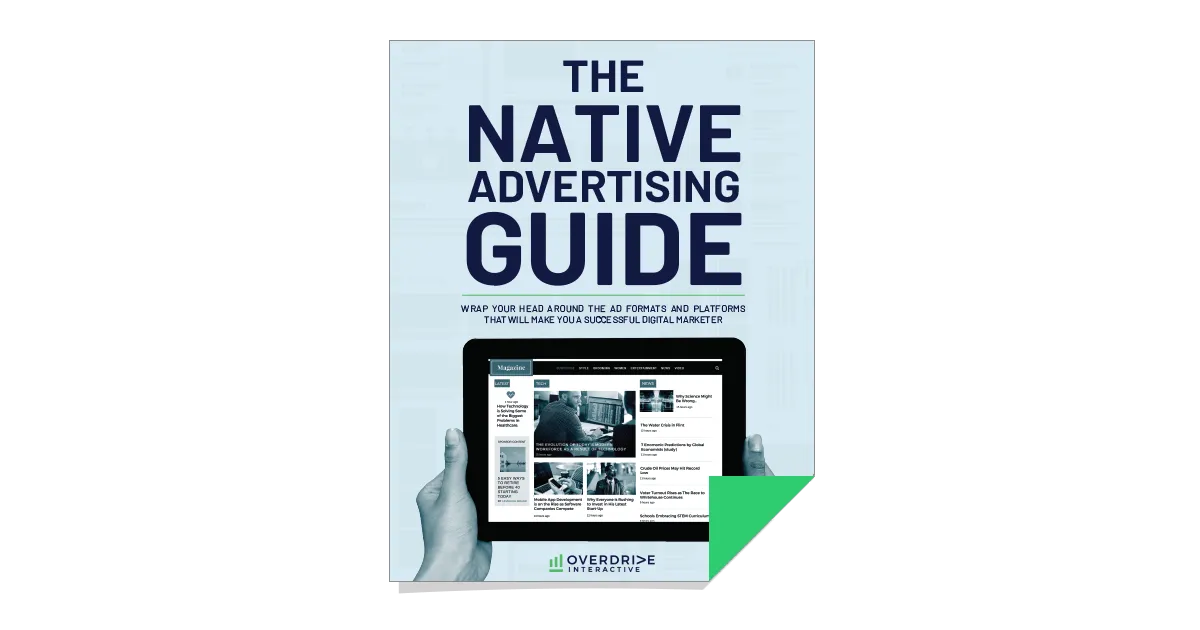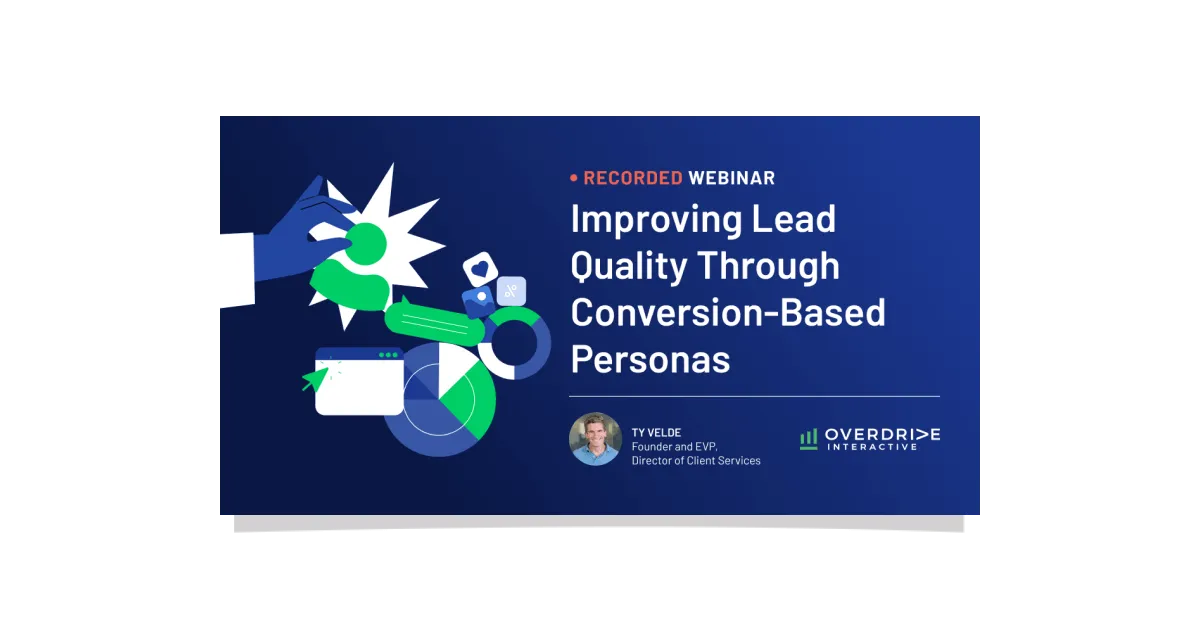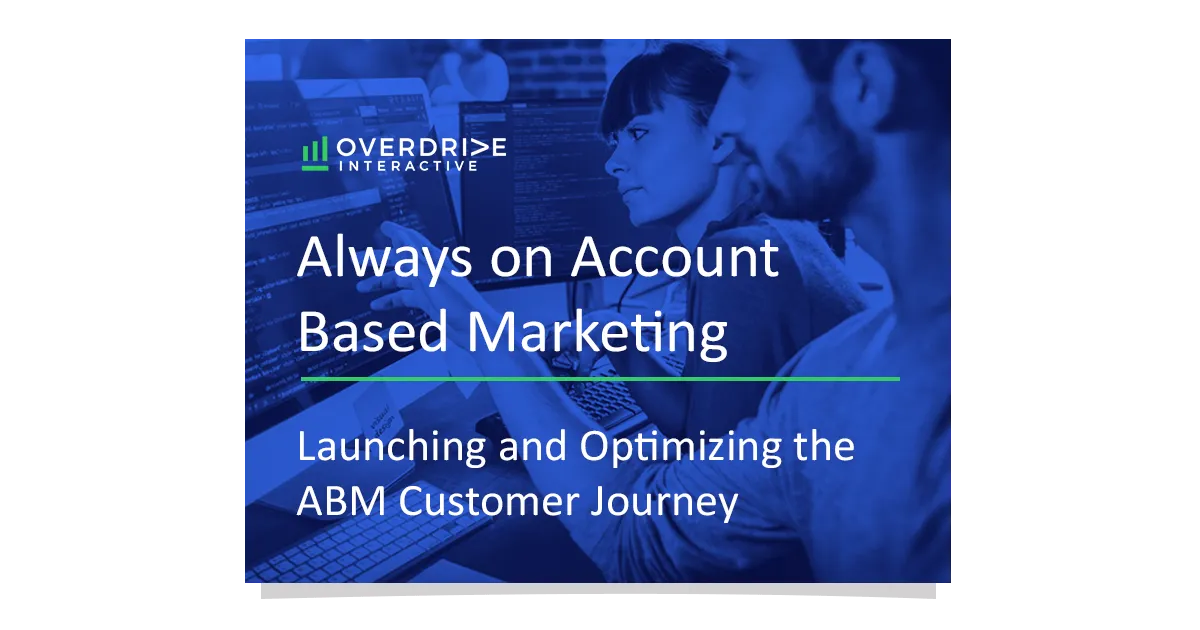The Optimal Team Structure for CMOs Partnering with Digital Marketing Agencies
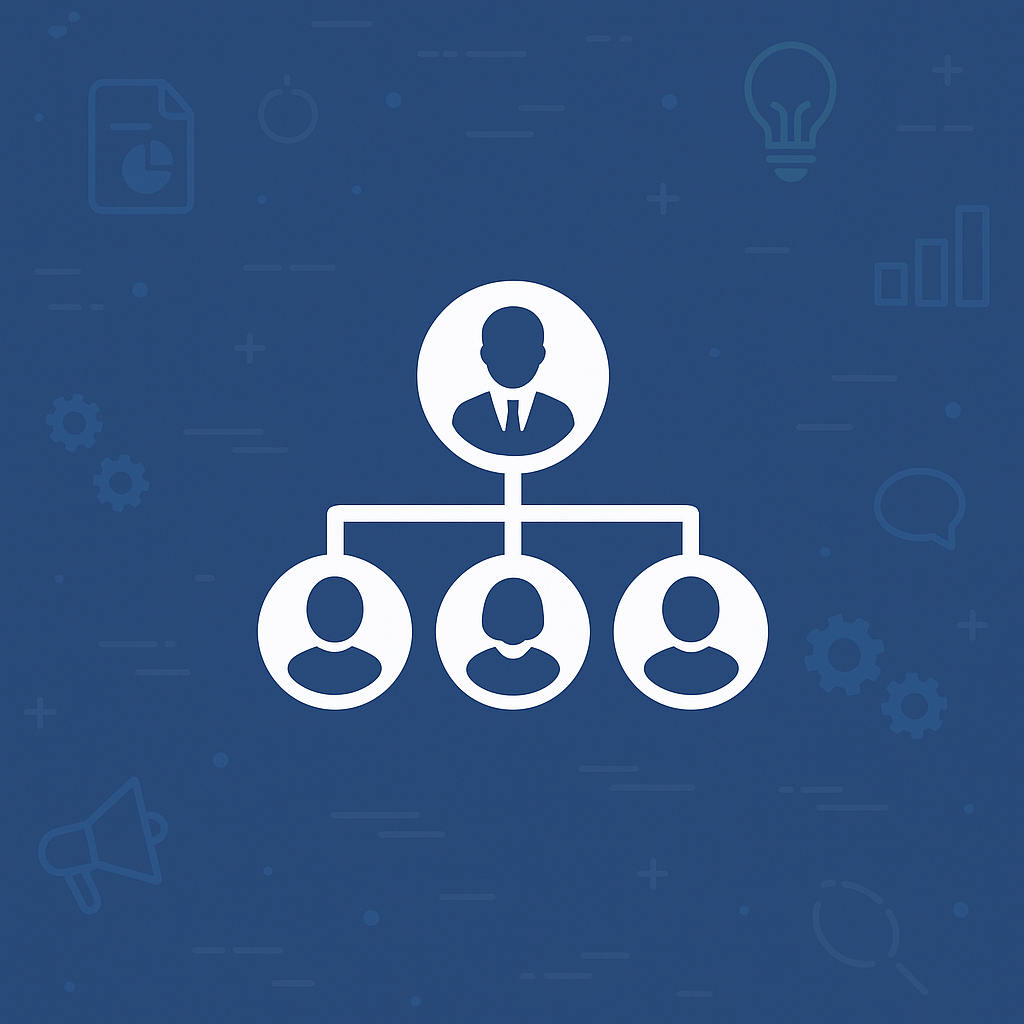
The Challenge for Modern CEOs
Modern CMOs are operating in one of the most complex marketing environments in history. Customer expectations are higher than ever; marketing efforts, especially digital, are more fragmented than ever before, and technological changes and advancements have been accelerated. For modern marketing leaders to be successful, they must rethink how their departments are structured to meet evolving business needs, while balancing the art of insourcing and outsourcing talent.
While thinking about the needs of today, and prepping for the uncertainty of tomorrow, agency partners are essential components of a successful team. A good agency partner brings scale, specialization, and innovation that even the best in-house teams struggle to maintain over extended periods of time. But let me let you in on a little secret, hiring a world-class agency is not enough. Even the best agencies will struggle to deliver their full value without a well-structured and staffed internal team.
At the end of the day, an agency partner is an investment, and the right internal team and department structure enables CMOs to maximize their investment by aligning execution with strategy, resulting in measurable business outcomes.
The Founding Principle: Agencies Extend, Not Replace
All agency partners are intended to extend the firepower of an internal team; they are not substitutes. They provide deep channel expertise, creativepower, and additional resources. However, they should not be responsible for brand vision, first-party data ownership, or aligning business goals to marketing efforts. The ownership of those responsibilities must reside with the internal team, or agencies risk drifting away from the CMO’s goals, objectives, and priorities.
What Does the Optimal Internal Marketing Team Look Like?
When building an internal marketing team to partner with an agency, there are three essential components that will help you maximize the value your agency partnership provides.
1. Strategic Lead / Agency Relationship Owner
Every CMO needs a senior internal leader who manages all agency partnerships. This individual is responsible for ensuring alignment between the agency and corporate goals, with the three top priorities listed below. Without this role, agencies often get conflicting priorities from multiple internal stakeholders, leading top performance inefficiency and misalignment on corporate objectives.
· Owns each agency relationship, serving as the main point of contact and accountability.
· Translates corporate goals and objectives into actionable marketing direction.
· Ensures the CMO’s vision and expectations are clearly communicated to all relevant parties.
2. Channel Oversight through Functional Leads
The next internal team layer is composed of functional leaders or subject matter experts. These individuals should be experts in their field, but are not intended to replace agency execution. Instead, they should be
· Defining strategic priorities and guardrails fortheir functional area and communicating them to their agency partners.
· Integrating agency deliverables with businessneeds and translating their meaning internally as needed.
· Work alongside agency partner to ensure quality,consistency, and accuracy across all campaigns and components.
For most companies, traditionally,there are four categorical functional leads needed.
· Paid Media
· Creative & Content
· MarTech & CRM
· Social & Community
For example, a Paid MediaFunctional Lead should set investment priorities and define performance KPIs, while the agency handles planning, execution, and optimization. This fosters an environment based on clear communication, and helps to avoid a duplication of efforts.
3. Data Custodian
In today’s ever-evolving marketing landscape, if there is one position that is a non-negotiable for CMOs, it is the Director, Data & Analytics. This role takes the guess work out of the data, by ensuring data integrity and aligning external and internal reporting with core business KPIs. The Director, Data & Analytics is the source of truth for all metrics and reporting.
While agencies often bring advanced analytics capabilities to the table, internal ownership ensures the data points and insights are trusted among senior leadership and throughout the organization.
Inclusive Culture: Partner, Not Vendor
The most effective and successful CMOs build and foster an inclusive culture where agencies feel like extensions of the team. This mentality creates an environment allowing for real-time debates and innovations. When an agency feels like part of the team, immersed in the brand’s culture, they start to anticipate needs and proactively work to surface new ideas that meet corporate goals by taking strategic or creative risks and investing their best talent in the relationship.
Circling back to the founding principle of agencies extend, not replace; remember, you can always higher a world-leading agency. But the real impact and multiplier comes from how a CMO structures their internal team.
Overdrive is a world-leading digital marketing agency with global reach, and industry-leading experience in the B2C and B2B spaces. Whether you are looking for a new agency partner or your first, we want to talk with you!
The Optimal Team Structure for CMOs Partnering with Digital Marketing Agencies

Download the guide to:
The Challenge for Modern CEOs
Modern CMOs are operating in one of the most complex marketing environments in history. Customer expectations are higher than ever; marketing efforts, especially digital, are more fragmented than ever before, and technological changes and advancements have been accelerated. For modern marketing leaders to be successful, they must rethink how their departments are structured to meet evolving business needs, while balancing the art of insourcing and outsourcing talent.
While thinking about the needs of today, and prepping for the uncertainty of tomorrow, agency partners are essential components of a successful team. A good agency partner brings scale, specialization, and innovation that even the best in-house teams struggle to maintain over extended periods of time. But let me let you in on a little secret, hiring a world-class agency is not enough. Even the best agencies will struggle to deliver their full value without a well-structured and staffed internal team.
At the end of the day, an agency partner is an investment, and the right internal team and department structure enables CMOs to maximize their investment by aligning execution with strategy, resulting in measurable business outcomes.
The Founding Principle: Agencies Extend, Not Replace
All agency partners are intended to extend the firepower of an internal team; they are not substitutes. They provide deep channel expertise, creativepower, and additional resources. However, they should not be responsible for brand vision, first-party data ownership, or aligning business goals to marketing efforts. The ownership of those responsibilities must reside with the internal team, or agencies risk drifting away from the CMO’s goals, objectives, and priorities.
What Does the Optimal Internal Marketing Team Look Like?
When building an internal marketing team to partner with an agency, there are three essential components that will help you maximize the value your agency partnership provides.
1. Strategic Lead / Agency Relationship Owner
Every CMO needs a senior internal leader who manages all agency partnerships. This individual is responsible for ensuring alignment between the agency and corporate goals, with the three top priorities listed below. Without this role, agencies often get conflicting priorities from multiple internal stakeholders, leading top performance inefficiency and misalignment on corporate objectives.
· Owns each agency relationship, serving as the main point of contact and accountability.
· Translates corporate goals and objectives into actionable marketing direction.
· Ensures the CMO’s vision and expectations are clearly communicated to all relevant parties.
2. Channel Oversight through Functional Leads
The next internal team layer is composed of functional leaders or subject matter experts. These individuals should be experts in their field, but are not intended to replace agency execution. Instead, they should be
· Defining strategic priorities and guardrails fortheir functional area and communicating them to their agency partners.
· Integrating agency deliverables with businessneeds and translating their meaning internally as needed.
· Work alongside agency partner to ensure quality,consistency, and accuracy across all campaigns and components.
For most companies, traditionally,there are four categorical functional leads needed.
· Paid Media
· Creative & Content
· MarTech & CRM
· Social & Community
For example, a Paid MediaFunctional Lead should set investment priorities and define performance KPIs, while the agency handles planning, execution, and optimization. This fosters an environment based on clear communication, and helps to avoid a duplication of efforts.
3. Data Custodian
In today’s ever-evolving marketing landscape, if there is one position that is a non-negotiable for CMOs, it is the Director, Data & Analytics. This role takes the guess work out of the data, by ensuring data integrity and aligning external and internal reporting with core business KPIs. The Director, Data & Analytics is the source of truth for all metrics and reporting.
While agencies often bring advanced analytics capabilities to the table, internal ownership ensures the data points and insights are trusted among senior leadership and throughout the organization.
Inclusive Culture: Partner, Not Vendor
The most effective and successful CMOs build and foster an inclusive culture where agencies feel like extensions of the team. This mentality creates an environment allowing for real-time debates and innovations. When an agency feels like part of the team, immersed in the brand’s culture, they start to anticipate needs and proactively work to surface new ideas that meet corporate goals by taking strategic or creative risks and investing their best talent in the relationship.
Circling back to the founding principle of agencies extend, not replace; remember, you can always higher a world-leading agency. But the real impact and multiplier comes from how a CMO structures their internal team.
Overdrive is a world-leading digital marketing agency with global reach, and industry-leading experience in the B2C and B2B spaces. Whether you are looking for a new agency partner or your first, we want to talk with you!
The Optimal Team Structure for CMOs Partnering with Digital Marketing Agencies

Download the guide to:
The Challenge for Modern CEOs
Modern CMOs are operating in one of the most complex marketing environments in history. Customer expectations are higher than ever; marketing efforts, especially digital, are more fragmented than ever before, and technological changes and advancements have been accelerated. For modern marketing leaders to be successful, they must rethink how their departments are structured to meet evolving business needs, while balancing the art of insourcing and outsourcing talent.
While thinking about the needs of today, and prepping for the uncertainty of tomorrow, agency partners are essential components of a successful team. A good agency partner brings scale, specialization, and innovation that even the best in-house teams struggle to maintain over extended periods of time. But let me let you in on a little secret, hiring a world-class agency is not enough. Even the best agencies will struggle to deliver their full value without a well-structured and staffed internal team.
At the end of the day, an agency partner is an investment, and the right internal team and department structure enables CMOs to maximize their investment by aligning execution with strategy, resulting in measurable business outcomes.
The Founding Principle: Agencies Extend, Not Replace
All agency partners are intended to extend the firepower of an internal team; they are not substitutes. They provide deep channel expertise, creativepower, and additional resources. However, they should not be responsible for brand vision, first-party data ownership, or aligning business goals to marketing efforts. The ownership of those responsibilities must reside with the internal team, or agencies risk drifting away from the CMO’s goals, objectives, and priorities.
What Does the Optimal Internal Marketing Team Look Like?
When building an internal marketing team to partner with an agency, there are three essential components that will help you maximize the value your agency partnership provides.
1. Strategic Lead / Agency Relationship Owner
Every CMO needs a senior internal leader who manages all agency partnerships. This individual is responsible for ensuring alignment between the agency and corporate goals, with the three top priorities listed below. Without this role, agencies often get conflicting priorities from multiple internal stakeholders, leading top performance inefficiency and misalignment on corporate objectives.
· Owns each agency relationship, serving as the main point of contact and accountability.
· Translates corporate goals and objectives into actionable marketing direction.
· Ensures the CMO’s vision and expectations are clearly communicated to all relevant parties.
2. Channel Oversight through Functional Leads
The next internal team layer is composed of functional leaders or subject matter experts. These individuals should be experts in their field, but are not intended to replace agency execution. Instead, they should be
· Defining strategic priorities and guardrails fortheir functional area and communicating them to their agency partners.
· Integrating agency deliverables with businessneeds and translating their meaning internally as needed.
· Work alongside agency partner to ensure quality,consistency, and accuracy across all campaigns and components.
For most companies, traditionally,there are four categorical functional leads needed.
· Paid Media
· Creative & Content
· MarTech & CRM
· Social & Community
For example, a Paid MediaFunctional Lead should set investment priorities and define performance KPIs, while the agency handles planning, execution, and optimization. This fosters an environment based on clear communication, and helps to avoid a duplication of efforts.
3. Data Custodian
In today’s ever-evolving marketing landscape, if there is one position that is a non-negotiable for CMOs, it is the Director, Data & Analytics. This role takes the guess work out of the data, by ensuring data integrity and aligning external and internal reporting with core business KPIs. The Director, Data & Analytics is the source of truth for all metrics and reporting.
While agencies often bring advanced analytics capabilities to the table, internal ownership ensures the data points and insights are trusted among senior leadership and throughout the organization.
Inclusive Culture: Partner, Not Vendor
The most effective and successful CMOs build and foster an inclusive culture where agencies feel like extensions of the team. This mentality creates an environment allowing for real-time debates and innovations. When an agency feels like part of the team, immersed in the brand’s culture, they start to anticipate needs and proactively work to surface new ideas that meet corporate goals by taking strategic or creative risks and investing their best talent in the relationship.
Circling back to the founding principle of agencies extend, not replace; remember, you can always higher a world-leading agency. But the real impact and multiplier comes from how a CMO structures their internal team.
Overdrive is a world-leading digital marketing agency with global reach, and industry-leading experience in the B2C and B2B spaces. Whether you are looking for a new agency partner or your first, we want to talk with you!
The Optimal Team Structure for CMOs Partnering with Digital Marketing Agencies

Key Insights From Our Research
The Challenge for Modern CEOs
Modern CMOs are operating in one of the most complex marketing environments in history. Customer expectations are higher than ever; marketing efforts, especially digital, are more fragmented than ever before, and technological changes and advancements have been accelerated. For modern marketing leaders to be successful, they must rethink how their departments are structured to meet evolving business needs, while balancing the art of insourcing and outsourcing talent.
While thinking about the needs of today, and prepping for the uncertainty of tomorrow, agency partners are essential components of a successful team. A good agency partner brings scale, specialization, and innovation that even the best in-house teams struggle to maintain over extended periods of time. But let me let you in on a little secret, hiring a world-class agency is not enough. Even the best agencies will struggle to deliver their full value without a well-structured and staffed internal team.
At the end of the day, an agency partner is an investment, and the right internal team and department structure enables CMOs to maximize their investment by aligning execution with strategy, resulting in measurable business outcomes.
The Founding Principle: Agencies Extend, Not Replace
All agency partners are intended to extend the firepower of an internal team; they are not substitutes. They provide deep channel expertise, creativepower, and additional resources. However, they should not be responsible for brand vision, first-party data ownership, or aligning business goals to marketing efforts. The ownership of those responsibilities must reside with the internal team, or agencies risk drifting away from the CMO’s goals, objectives, and priorities.
What Does the Optimal Internal Marketing Team Look Like?
When building an internal marketing team to partner with an agency, there are three essential components that will help you maximize the value your agency partnership provides.
1. Strategic Lead / Agency Relationship Owner
Every CMO needs a senior internal leader who manages all agency partnerships. This individual is responsible for ensuring alignment between the agency and corporate goals, with the three top priorities listed below. Without this role, agencies often get conflicting priorities from multiple internal stakeholders, leading top performance inefficiency and misalignment on corporate objectives.
· Owns each agency relationship, serving as the main point of contact and accountability.
· Translates corporate goals and objectives into actionable marketing direction.
· Ensures the CMO’s vision and expectations are clearly communicated to all relevant parties.
2. Channel Oversight through Functional Leads
The next internal team layer is composed of functional leaders or subject matter experts. These individuals should be experts in their field, but are not intended to replace agency execution. Instead, they should be
· Defining strategic priorities and guardrails fortheir functional area and communicating them to their agency partners.
· Integrating agency deliverables with businessneeds and translating their meaning internally as needed.
· Work alongside agency partner to ensure quality,consistency, and accuracy across all campaigns and components.
For most companies, traditionally,there are four categorical functional leads needed.
· Paid Media
· Creative & Content
· MarTech & CRM
· Social & Community
For example, a Paid MediaFunctional Lead should set investment priorities and define performance KPIs, while the agency handles planning, execution, and optimization. This fosters an environment based on clear communication, and helps to avoid a duplication of efforts.
3. Data Custodian
In today’s ever-evolving marketing landscape, if there is one position that is a non-negotiable for CMOs, it is the Director, Data & Analytics. This role takes the guess work out of the data, by ensuring data integrity and aligning external and internal reporting with core business KPIs. The Director, Data & Analytics is the source of truth for all metrics and reporting.
While agencies often bring advanced analytics capabilities to the table, internal ownership ensures the data points and insights are trusted among senior leadership and throughout the organization.
Inclusive Culture: Partner, Not Vendor
The most effective and successful CMOs build and foster an inclusive culture where agencies feel like extensions of the team. This mentality creates an environment allowing for real-time debates and innovations. When an agency feels like part of the team, immersed in the brand’s culture, they start to anticipate needs and proactively work to surface new ideas that meet corporate goals by taking strategic or creative risks and investing their best talent in the relationship.
Circling back to the founding principle of agencies extend, not replace; remember, you can always higher a world-leading agency. But the real impact and multiplier comes from how a CMO structures their internal team.
Overdrive is a world-leading digital marketing agency with global reach, and industry-leading experience in the B2C and B2B spaces. Whether you are looking for a new agency partner or your first, we want to talk with you!
The Optimal Team Structure for CMOs Partnering with Digital Marketing Agencies
Get the Complete Whitepaper
The Optimal Team Structure for CMOs Partnering with Digital Marketing Agencies
The Challenge for Modern CEOs
Modern CMOs are operating in one of the most complex marketing environments in history. Customer expectations are higher than ever; marketing efforts, especially digital, are more fragmented than ever before, and technological changes and advancements have been accelerated. For modern marketing leaders to be successful, they must rethink how their departments are structured to meet evolving business needs, while balancing the art of insourcing and outsourcing talent.
While thinking about the needs of today, and prepping for the uncertainty of tomorrow, agency partners are essential components of a successful team. A good agency partner brings scale, specialization, and innovation that even the best in-house teams struggle to maintain over extended periods of time. But let me let you in on a little secret, hiring a world-class agency is not enough. Even the best agencies will struggle to deliver their full value without a well-structured and staffed internal team.
At the end of the day, an agency partner is an investment, and the right internal team and department structure enables CMOs to maximize their investment by aligning execution with strategy, resulting in measurable business outcomes.
The Founding Principle: Agencies Extend, Not Replace
All agency partners are intended to extend the firepower of an internal team; they are not substitutes. They provide deep channel expertise, creativepower, and additional resources. However, they should not be responsible for brand vision, first-party data ownership, or aligning business goals to marketing efforts. The ownership of those responsibilities must reside with the internal team, or agencies risk drifting away from the CMO’s goals, objectives, and priorities.
What Does the Optimal Internal Marketing Team Look Like?
When building an internal marketing team to partner with an agency, there are three essential components that will help you maximize the value your agency partnership provides.
1. Strategic Lead / Agency Relationship Owner
Every CMO needs a senior internal leader who manages all agency partnerships. This individual is responsible for ensuring alignment between the agency and corporate goals, with the three top priorities listed below. Without this role, agencies often get conflicting priorities from multiple internal stakeholders, leading top performance inefficiency and misalignment on corporate objectives.
· Owns each agency relationship, serving as the main point of contact and accountability.
· Translates corporate goals and objectives into actionable marketing direction.
· Ensures the CMO’s vision and expectations are clearly communicated to all relevant parties.
2. Channel Oversight through Functional Leads
The next internal team layer is composed of functional leaders or subject matter experts. These individuals should be experts in their field, but are not intended to replace agency execution. Instead, they should be
· Defining strategic priorities and guardrails fortheir functional area and communicating them to their agency partners.
· Integrating agency deliverables with businessneeds and translating their meaning internally as needed.
· Work alongside agency partner to ensure quality,consistency, and accuracy across all campaigns and components.
For most companies, traditionally,there are four categorical functional leads needed.
· Paid Media
· Creative & Content
· MarTech & CRM
· Social & Community
For example, a Paid MediaFunctional Lead should set investment priorities and define performance KPIs, while the agency handles planning, execution, and optimization. This fosters an environment based on clear communication, and helps to avoid a duplication of efforts.
3. Data Custodian
In today’s ever-evolving marketing landscape, if there is one position that is a non-negotiable for CMOs, it is the Director, Data & Analytics. This role takes the guess work out of the data, by ensuring data integrity and aligning external and internal reporting with core business KPIs. The Director, Data & Analytics is the source of truth for all metrics and reporting.
While agencies often bring advanced analytics capabilities to the table, internal ownership ensures the data points and insights are trusted among senior leadership and throughout the organization.
Inclusive Culture: Partner, Not Vendor
The most effective and successful CMOs build and foster an inclusive culture where agencies feel like extensions of the team. This mentality creates an environment allowing for real-time debates and innovations. When an agency feels like part of the team, immersed in the brand’s culture, they start to anticipate needs and proactively work to surface new ideas that meet corporate goals by taking strategic or creative risks and investing their best talent in the relationship.
Circling back to the founding principle of agencies extend, not replace; remember, you can always higher a world-leading agency. But the real impact and multiplier comes from how a CMO structures their internal team.
Overdrive is a world-leading digital marketing agency with global reach, and industry-leading experience in the B2C and B2B spaces. Whether you are looking for a new agency partner or your first, we want to talk with you!

The Optimal Team Structure for CMOs Partnering with Digital Marketing Agencies
Get the Slides
The Optimal Team Structure for CMOs Partnering with Digital Marketing Agencies
The Challenge for Modern CEOs
Modern CMOs are operating in one of the most complex marketing environments in history. Customer expectations are higher than ever; marketing efforts, especially digital, are more fragmented than ever before, and technological changes and advancements have been accelerated. For modern marketing leaders to be successful, they must rethink how their departments are structured to meet evolving business needs, while balancing the art of insourcing and outsourcing talent.
While thinking about the needs of today, and prepping for the uncertainty of tomorrow, agency partners are essential components of a successful team. A good agency partner brings scale, specialization, and innovation that even the best in-house teams struggle to maintain over extended periods of time. But let me let you in on a little secret, hiring a world-class agency is not enough. Even the best agencies will struggle to deliver their full value without a well-structured and staffed internal team.
At the end of the day, an agency partner is an investment, and the right internal team and department structure enables CMOs to maximize their investment by aligning execution with strategy, resulting in measurable business outcomes.
The Founding Principle: Agencies Extend, Not Replace
All agency partners are intended to extend the firepower of an internal team; they are not substitutes. They provide deep channel expertise, creativepower, and additional resources. However, they should not be responsible for brand vision, first-party data ownership, or aligning business goals to marketing efforts. The ownership of those responsibilities must reside with the internal team, or agencies risk drifting away from the CMO’s goals, objectives, and priorities.
What Does the Optimal Internal Marketing Team Look Like?
When building an internal marketing team to partner with an agency, there are three essential components that will help you maximize the value your agency partnership provides.
1. Strategic Lead / Agency Relationship Owner
Every CMO needs a senior internal leader who manages all agency partnerships. This individual is responsible for ensuring alignment between the agency and corporate goals, with the three top priorities listed below. Without this role, agencies often get conflicting priorities from multiple internal stakeholders, leading top performance inefficiency and misalignment on corporate objectives.
· Owns each agency relationship, serving as the main point of contact and accountability.
· Translates corporate goals and objectives into actionable marketing direction.
· Ensures the CMO’s vision and expectations are clearly communicated to all relevant parties.
2. Channel Oversight through Functional Leads
The next internal team layer is composed of functional leaders or subject matter experts. These individuals should be experts in their field, but are not intended to replace agency execution. Instead, they should be
· Defining strategic priorities and guardrails fortheir functional area and communicating them to their agency partners.
· Integrating agency deliverables with businessneeds and translating their meaning internally as needed.
· Work alongside agency partner to ensure quality,consistency, and accuracy across all campaigns and components.
For most companies, traditionally,there are four categorical functional leads needed.
· Paid Media
· Creative & Content
· MarTech & CRM
· Social & Community
For example, a Paid MediaFunctional Lead should set investment priorities and define performance KPIs, while the agency handles planning, execution, and optimization. This fosters an environment based on clear communication, and helps to avoid a duplication of efforts.
3. Data Custodian
In today’s ever-evolving marketing landscape, if there is one position that is a non-negotiable for CMOs, it is the Director, Data & Analytics. This role takes the guess work out of the data, by ensuring data integrity and aligning external and internal reporting with core business KPIs. The Director, Data & Analytics is the source of truth for all metrics and reporting.
While agencies often bring advanced analytics capabilities to the table, internal ownership ensures the data points and insights are trusted among senior leadership and throughout the organization.
Inclusive Culture: Partner, Not Vendor
The most effective and successful CMOs build and foster an inclusive culture where agencies feel like extensions of the team. This mentality creates an environment allowing for real-time debates and innovations. When an agency feels like part of the team, immersed in the brand’s culture, they start to anticipate needs and proactively work to surface new ideas that meet corporate goals by taking strategic or creative risks and investing their best talent in the relationship.
Circling back to the founding principle of agencies extend, not replace; remember, you can always higher a world-leading agency. But the real impact and multiplier comes from how a CMO structures their internal team.
Overdrive is a world-leading digital marketing agency with global reach, and industry-leading experience in the B2C and B2B spaces. Whether you are looking for a new agency partner or your first, we want to talk with you!

The Optimal Team Structure for CMOs Partnering with Digital Marketing Agencies




